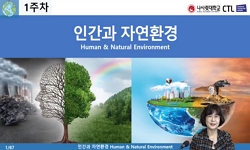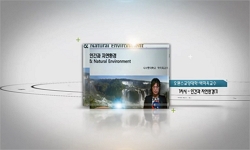This study was carried out to find out the way to build a comprehensive wetland ecosystem database using the technique of remote sensing and Geographic Information System. A Landsat TM image (taken in Oct. 30, 2002), Kompsat-2 images (Jan. 17, 2008 & ...
http://chineseinput.net/에서 pinyin(병음)방식으로 중국어를 변환할 수 있습니다.
변환된 중국어를 복사하여 사용하시면 됩니다.
- 中文 을 입력하시려면 zhongwen을 입력하시고 space를누르시면됩니다.
- 北京 을 입력하시려면 beijing을 입력하시고 space를 누르시면 됩니다.
https://www.riss.kr/link?id=A77026206
- 저자
- 발행기관
- 학술지명
- 권호사항
-
발행연도
2010
-
작성언어
-
-
주제어
라이다 ; 원격탐사 ; 영상분석 ; 습지 생태계 ; 낙동강 하구 ; LiDAR ; Remote Sensing ; Image Analysis ; Wetland Ecosystem ; Nakdong River Estuary
-
KDC
500
-
등재정보
KCI등재
-
자료형태
학술저널
- 발행기관 URL
-
수록면
50-61(12쪽)
-
KCI 피인용횟수
6
- DOI식별코드
- 제공처
- 소장기관
-
0
상세조회 -
0
다운로드
부가정보
다국어 초록 (Multilingual Abstract)
This study was carried out to find out the way to build a comprehensive wetland ecosystem database using the technique of remote sensing and Geographic Information System. A Landsat TM image (taken in Oct. 30, 2002), Kompsat-2 images (Jan. 17, 2008 & Nov. 20, 2008), LiDAR(Mar. 1, 2009) were used for the primary source for the image analysis. Field surveys were conducted March to August of 2009 to help image analysis and examine the results. An actual wetland vegetation map was created based on the field survey. Satellite images were analyzed by unsupervised and supervised classification methods and finally categorized into such classes as Phragmites australis community, mixed community, sand beach, Scirpus planiculmis community and non-vegetation intertidal area. The map of wetland productivity was developed based on the productivity of Phragmites australis and the relationship to the proximity of adjacent water bodies. The developed 3 dimensional wetland map showed such several potential applications as flood inundation, birds flyway viewsheds and benthos distribution. Considering these results, we concluded that it is possible to use the remote sensing and GIS techniques for producing wetland ecosystem spatial database and these techniques are very effective for the development of the national wetland inventory in Korea.
참고문헌 (Reference)
1 유복모, "현대 디지털사진측량학" 피어슨에듀케이션코리아 93-144, 2003
2 박수영, "습지학 원론:한국의 늪" 은혜기획 55-74, 2000
3 구본학, "습지생태학" 조경 101-157, 2009
4 일본환경성, "도쿄만의 매립사업에 따른 환경영향조사"
5 김구연, "낙동강 하구의 수생관속식물의 분포 변화와 수금류(고니류)의 먹이식물인 세모고랭이의 성장 변화" 한국생태학회 28 (28): 335-345, 2005
6 윤해순, "낙동강 하구에서의 수금류 식이식물의 현존량과 이용에 관한 연구" 경희대학교 1987
7 윤해순, "낙동강 하구 간석지의 수생 관속식물에 관한 연구-하구언 건설 전후 의 간석지 식생의 생산성 비교" 14 (14): 63-73, 1991
8 여운상, "낙동강 새섬매자기 군락의 감소원인" 부산발전연구원 2009
9 Yi, Gi-Chul, "Value and Use of Ohio's GIS-based Wetlands Inventory" 49 (49): 23-28, 1994
10 Fredrickson, L. H, "Nutritional values of waterfowl foods. Waterfowl management handbook"
1 유복모, "현대 디지털사진측량학" 피어슨에듀케이션코리아 93-144, 2003
2 박수영, "습지학 원론:한국의 늪" 은혜기획 55-74, 2000
3 구본학, "습지생태학" 조경 101-157, 2009
4 일본환경성, "도쿄만의 매립사업에 따른 환경영향조사"
5 김구연, "낙동강 하구의 수생관속식물의 분포 변화와 수금류(고니류)의 먹이식물인 세모고랭이의 성장 변화" 한국생태학회 28 (28): 335-345, 2005
6 윤해순, "낙동강 하구에서의 수금류 식이식물의 현존량과 이용에 관한 연구" 경희대학교 1987
7 윤해순, "낙동강 하구 간석지의 수생 관속식물에 관한 연구-하구언 건설 전후 의 간석지 식생의 생산성 비교" 14 (14): 63-73, 1991
8 여운상, "낙동강 새섬매자기 군락의 감소원인" 부산발전연구원 2009
9 Yi, Gi-Chul, "Value and Use of Ohio's GIS-based Wetlands Inventory" 49 (49): 23-28, 1994
10 Fredrickson, L. H, "Nutritional values of waterfowl foods. Waterfowl management handbook"
11 Kelly, M, "Integrating LiDAR and CIR Imagery for Mapping Tidal Wetlands" 72 (72): 251-257, 2006
12 이기철, "GIS와 원격탐사를 이용한 습지 생태계 데이터베이스 구축에 관한 연구" 2 (2): 1-15, 1999
13 이기철, "GIS와 RS를 이용한 생태지도 작성기법에 관한 기초연구" 한국지리정보학회 7 (7): 57-69, 2004
14 Paine, Jeffrey G, "Combining EM and LiDAR to map coastal wetlands : An example from mustang island Texas"
15 Cowardin L. M, "Classification of Wetlands and Deepwater Habitats of the U.S" U.S. Fish and Wildlife Service Pub 103-, 1979
16 Barrette, Jeffrey, "Accuracy Assessment of Wetland Boundary Delineation Using Aerial Photography and Digital Orthophotography" 66 (66): 409-416, 2000
17 환경부, "2004 하구역생태계 정밀조사" 국립환경연구원 2005
동일학술지(권/호) 다른 논문
-
- 한국지리정보학회
- 이근상 ( Geun Sang Lee )
- 2010
- KCI등재
-
가로공간 이미지에 영향을 미치는 가로변건축물 형태구성요소에 관한 연구
- 한국지리정보학회
- 최임주 ( Im Joo Choi )
- 2010
- KCI등재
-
GIS와 GPS를 이용한 소나무재선충병 피해지 항공정밀예찰 기법 개발
- 한국지리정보학회
- 김준범 ( Joon Bum Kim )
- 2010
- KCI등재
-
Web-GIS를 활용한 배전설계 교육용 시스템 개발에 관한 연구
- 한국지리정보학회
- 이동엽 ( Dong Yeop Lee )
- 2010
- KCI등재
분석정보
인용정보 인용지수 설명보기
학술지 이력
| 연월일 | 이력구분 | 이력상세 | 등재구분 |
|---|---|---|---|
| 2026 | 평가예정 | 재인증평가 신청대상 (재인증) | |
| 2020-01-01 | 평가 | 등재학술지 유지 (재인증) |  |
| 2017-01-01 | 평가 | 등재학술지 유지 (계속평가) |  |
| 2013-01-01 | 평가 | 등재학술지 유지 (등재유지) |  |
| 2010-01-01 | 평가 | 등재학술지 유지 (등재유지) |  |
| 2008-01-01 | 평가 | 등재학술지 유지 (등재유지) |  |
| 2005-01-01 | 평가 | 등재학술지 선정 (등재후보2차) |  |
| 2004-01-01 | 평가 | 등재후보 1차 PASS (등재후보1차) |  |
| 2002-01-01 | 평가 | 등재후보학술지 선정 (신규평가) |  |
학술지 인용정보
| 기준연도 | WOS-KCI 통합IF(2년) | KCIF(2년) | KCIF(3년) |
|---|---|---|---|
| 2016 | 0.82 | 0.82 | 0.84 |
| KCIF(4년) | KCIF(5년) | 중심성지수(3년) | 즉시성지수 |
| 0.88 | 0.8 | 0.98 | 0.14 |




 ScienceON
ScienceON KISS
KISS







